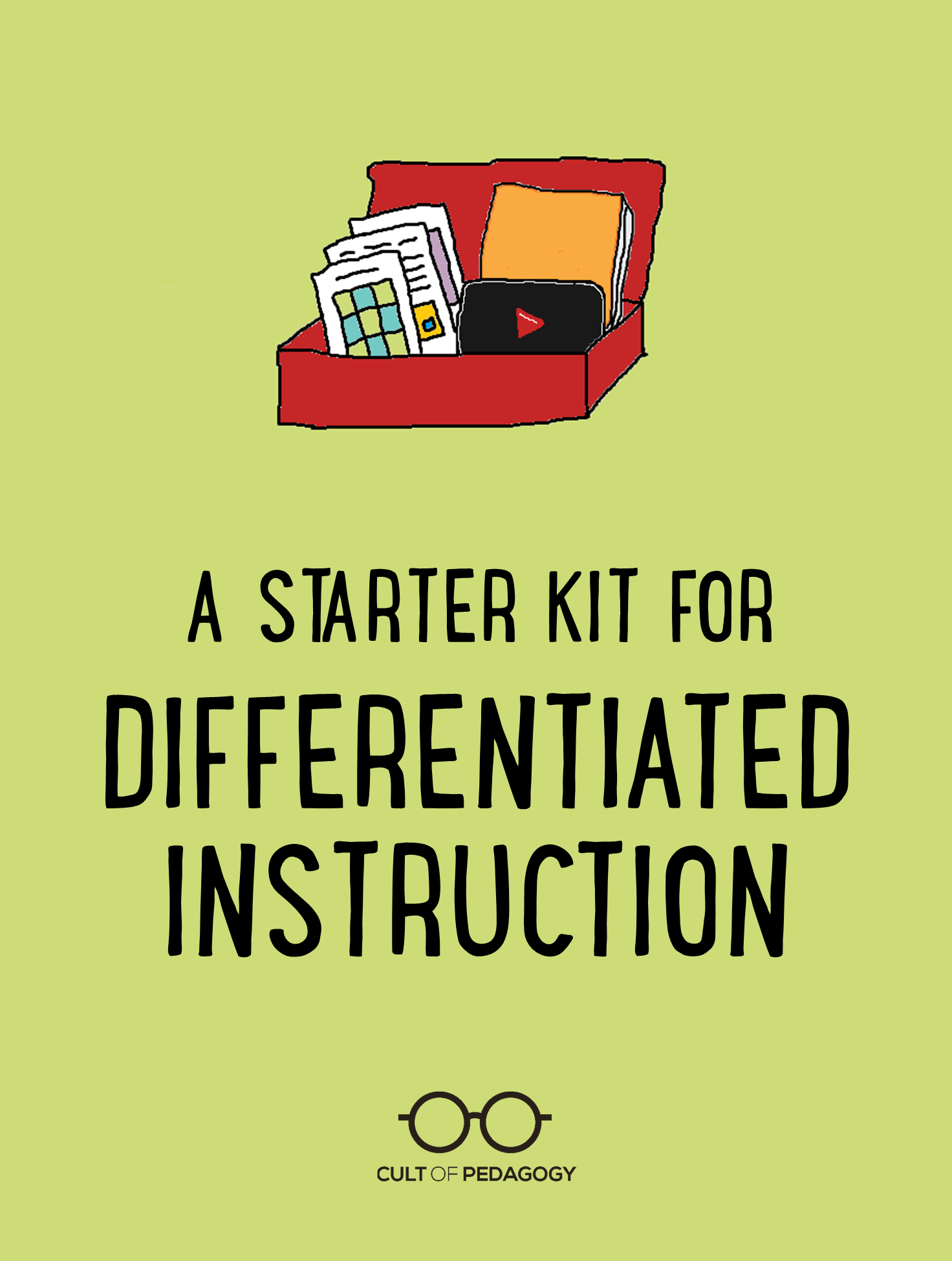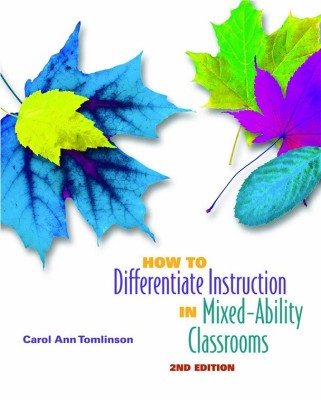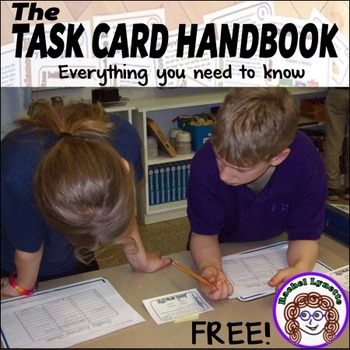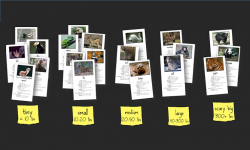
This post contains Amazon Affiliate links; if you purchase from Amazon after going through these links, Cult of Pedagogy receives a small commission at no extra cost to you.
You have probably come to this article for one of two reasons: Either you want to start differentiating instruction in your classroom and don’t know where to start, or you already differentiate, but want to see if you’re missing anything. I have combed through tons of online resources on how to differentiate instruction, and have put together this collection of the clearest, most high-quality resources for learning how to differentiate in your classroom. Off we go, then!
Step 1: Learn the Basics

Lots of teachers think they are differentiating, when they really kind of aren’t. So before you get started, give yourself a solid overview of what differentiation is (and isn’t) and how it works. To do that, you need to read Carol Tomlinson, whose work is the gold standard in differentiation. Her book, How to Differentiate Instruction in Mixed-Ability Classrooms, is the best one I’ve seen on the subject. And it’s short: At just over 100 pages, it’s a fast, easy read, and is full of useful information that will set you on the path toward high-quality differentiation.
In addition to explaining basic principles, the book shows you how to manage a differentiated classroom, teaches you specific strategies, and lets you peek inside a few sample differentiated classrooms so you can see how all the parts work together. I really can’t recommend this book highly enough…get it!
Step 2: Watch Real Teachers Differentiate
Reading about how to differentiate on paper is helpful, but seeing other teachers actually doing it will give you a far better understanding of how to implement the strategies in your own classroom.
This Edutopia video shows how one school has set up a system they call Reteach and Enrich, where time is built into the schedule every day to reteach students who haven’t met learning targets or provide enrichment activities for those who have. Watching this process in action makes it really clear HOW to make it work:
In the video below, Hampton High School teachers demonstrate using exit tickets to check for understanding and to tier instruction for the following day.
Below, second grade teacher Robert Pronovost shows how he uses two separate online programs, Planet Turtle and Dreambox, to meet students’ individual needs in 2nd grade math:
The next video shows how veteran teachers Larry Ferlazzo and Katie Hull Synieski differentiate instruction for English-language learners. These strategies can make lessons accessible to every student regardless of language proficiency.
Finally, this video shows how Mary Vagenas uses Learning Menus to differentiate in her 7th grade Social Studies class:
Step 3: Gather Differentiation Tools
Once you understand the basic principles of differentiation, it’s a good idea to have a few basic tools on hand.
Task Cards
What are task cards? They are all the rage in some classrooms: The basic idea is that you take tasks and questions that might normally appear on worksheets and put them onto laminated cards (one item per card), which allows you to better individualize instruction, set up centers, and group students according to need (plus, you can re-use them year after year!). You can make your own or browse through thousands on Teachers Pay Teachers. This free e-book by Rachel Lynette explains how to use them in detail:
Tiered Lesson Template
This blog post from Marsha McGuire at A Differentiated Kindergarten shows you how to plan a tiered lesson and includes an editable template. Even though the featured classroom is a kindergarten, Marsha’s system would work effectively with all age groups.
Using Color to Help You Tier Differentiated Activities
Learning Menus
This packet from the University of Virginia Curry School of Education teaches you how to create learning menus or choice menus, which offer students a variety of learning activities to choose from, depending on their interests and learning profiles.
Choice Menus (PDF)
Further Reading
There’s No Time to Differentiate: Myth-Busting DI, Part 2
by John McCarthy
This Edutopia article discusses some of the myths about and objections to differentiation.
Dr. Kathie Nunley’s Layered Curriculum
This website is based entirely on the Layered Curriculum philosophy. Somewhere between a learning menu and a tiered unit, a layered curriculum looks like an interesting take on differentiation and is worth a look once you’ve got the basics down.
Leading and Managing a Differentiated Classroom
by Carol Tomlinson and Marcia Imbeau
Although I have not read this one, I got a recommendation from Dr. Jennifer Beasley, an assistant professor in the Department of Curriculum and Instruction at the University of Arkansas. “This is a practical guide for how to begin to establish routines and practices that facilitate differentiation. We all know that we could have the most beautiful lesson on paper and see that same lesson fall apart in the classroom as a result of forgetting to give directions for handing out materials. This resource offers many practical examples for putting some routines in place to allow for working in groups, answering questions, or even talking with your students about differentiation.”
Join my mailing list and never miss another post. You’ll get weekly tips, tools, and inspiration — in quick, bite-sized packages — all geared toward making your teaching more effective and joyful. To thank you, I’ll send you a free copy of my new e-booklet, 20 Ways to Cut Your Grading Time in Half. I look forward to getting to know you better!






Soy profesora de nivel elemental en PR y ahora este tema ha incrementado..,me gustaria conocer mas alternativas.Gracias
Con la ayuda de Google Translate , estoy en condiciones de responder a su comentario – perdonar los errores de gramática ! Yo sugeriría que lea el libro de Carol Tomlinson ( se recomienda más arriba ) para las estrategias más específicas .
This is what I’ve been looking for. Thank you so much. My team is going to change the way we look at our data and plan our instruction.
That’s awesome, T.D. Thanks for letting me know.
One thing I cannot seem to find an answer to when it comes to differentiating is how to grade and keep up the grade book. Any insight to this?
Hi Amanda,
One thing to try to keep in mind is what differentiation is and what it isn’t. Differentiation is about using formative assessments to attend to the learning needs of a student or group of students. For example: In math, some kids might benefit from using counting manipulatives or a number line when practicing counting on from the larger number. In writing, some kids might benefit from using a graphic organizer to plan out ideas. For kids who need support with word spacing/motor planning, I’ve provided paper with word lines on it. Determining what a child needs to help them get to that next step is at the heart of differentiation.
Here’s another article about what differentiation is and what it isn’t that you might want to check out. As far as managing grades, take a look at Kiddom: Standards-Based Grading Made Wonderful and How Accurate Are Your Grades? I hope this helps.
This was a helpful introduction. Thank you! Your explanations with the embedded videos helped me to understand more clearly. I think some teachers in primary grades have done this in various ways for a long time but didn’t have a name for it. It’s SO great to see it being stressed in 4th-8th grade classrooms as well.
Differentiation is an instructional approach that recognizes and responds to the diverse learning needs, styles, and abilities of students. It involves tailoring the teaching process to meet the unique needs of each learner, ensuring that all students have an equal opportunity to succeed.
The importance of differentiation in teaching cannot be overstated:
1. Caters to diverse learning styles: Students learn in various ways, such as visually, auditorily, or kinesthetically. Differentiation helps teachers reach students with different learning styles.
2. Addresses varying learning abilities: Students have different levels of understanding and skills. Differentiation ensures that lessons are accessible and challenging for all learners.
3. Boosts student engagement: When lessons are tailored to their needs, students become more engaged and motivated to learn.
4. Enhances academic achievement: Differentiation helps students understand complex concepts, leading to improved academic performance.
5. Fosters inclusive learning environments: Differentiation promotes equity and inclusivity by recognizing and valuing individual differences.
6. Encourages personalized learning: Differentiation allows teachers to tailor instruction to meet the unique needs and interests of each student.
7. Develops critical thinking and problem-solving skills: Differentiation encourages students to think critically and approach problems from different angles.
This was such a helpful blog. I particularly loved the math one, as I am a math teacher. I was wondering if you have any suggestions for how to differentiate within the context of a rotational model in a middle grades math classroom. Thanks so much!
Wow, that’s a great question. I’m not sure if this answers it, but you might want to check out our posts on working with playlists, hyperdocs, and this one about a middle school self-paced math class. I hope these help!
Hello – did you ever get the samples of high quality lesson plans using differentiation? I would love to see them!
Hi, Noah.
I work for Cult of Pedagogy and wanted to let you know that unfortunately, we really just haven’t gotten a lot of response.
Thanks for the wealth of information!!
I looked up your recommendation for Tomlison’s book – How to Differentiate Instruction and I noticed that she also wrote a book called “How to Differentiate Instructon in Academically Diverse Classrooms.”
I teach ESL to college level students and am wondering which book would be more helpful.
Thanks!
Sara –
Having read both books for my master’s program, I can tell you that they are almost two sides of the same coin. Both are really good “differentiation bibles”, so you’re not going to go wrong with either one as far as the differentiation goes. I would lean a little more towards the academically diverse classroom book, however, if you’re teaching ESL, as that book goes a little more in detail regarding how to accommodate wide skill gaps and academically challenging situations. The other book is more of a general handbook for differentiation.
Another great resource from the Cult of Pedagogy. Thank you!!!
I think that this is a nice example in a school that has the advantage of multiple teachers in a grade level, but how would you suggest differentiating if you teach multiple grade levels and are the only person teaching your subject? I teach at a K-8 school, and I teach 6th, 7th, and 8th grade ELA and I’m the only ELA teacher. I have multiple abilities in a grade level at a time, and usually when I get my 6th graders, they are several grade levels below in reading. I always have a few that are several levels above as well. I know that I’m probably in a good position to differentiate, but I’m struggling at it.
Hi! Differentiating can seem daunting, but if you keep in mind that it isn’t about creating 29 different lessons for 29 kids, but rather about offering choices and choosing intentional teaching strategies, it can feel a lot less overwhelming. For example, let’s say you introduce theme in a whole class lesson. Differentiation happens in the way kids practice the concept. Some kids may want to choose from their independent reading books, others might benefit from listening to an audio book or podcast. Another student might benefit from listening to an audio book that they can also follow along with visually. Or you might choose a NewsEla article that you want the whole class to read, while letting kids choose the article’s reading level. While kids are practicing, you might need to meet 1:1 or with a small group to offer more guidance and modeling. You might find that some kids need more instruction (see youtube videos) or need help organizing their ideas via graphic organizers, post its, etc. Some kids might be more successful working individually in a different part of the room, while others might work with a partner. The bottom line is that everyone can be working on the same concept, but formative data is going to drive the choices and instructional strategies. Here’s another article that might be helpful, but I also really recommend investing in Carol Tomlinson’s book if you haven’t already done so.
There are also a ton of resources on our Differentiation Pinterest board. See what might be relevant. Also take a look at the posts in our English Language Arts category. Something like One-Pagers could be successfully completed by all kids regardless of reading level. Hope this helps!
This information is very helpful for identifying the strategies used for differentiation in class and also to see and learn different strategies used in class environment. It is also good to see that we, teachers, have been doing some of these strategies without realizing them. Thanks for that.
This was very helpful information with a surplus of resources! I find the reteach and enrich concept particularly helpful as students in every class are at different levels. I have worked in an ESL classroom where there are students that are “newcomers” with limited English skills and highly advanced speakers all within the same class. I think building in a time block for reteaching concepts to certain students and providing enrichment opportunities for others is the best way to tailor learning concepts for each individual student to their level.
I particularly enjoyed learning about the Reteach and Enrich program. It has reaffirmed what my colleague and I are currently doing. Thanks
I have multple intelligence in my class and so i find reteaching very helpful. I also appreciate the additional resources.
Differentiated instruction really helps children to be skillful and confident with their content. As we have our own teaching styles, it is important for us to understand that students have their own learning styles.
I have always worked with students in which Differentiated instruction was needed and made a difference in how the students grasped the skills that were being taught. Although I have always used these skills as I taught my students, I find that this information was very informative.
Thank you, Jacqueline. Jenn will be happy to know that you found this useful.
very informative
Differentiated instruction has been the backbone of my teaching in the classroom. I always tailor my instruction to meet the needs of the students in the classroom. I manage the ESE students by grouping them and issue instructions full of activities.
Is there a way to access the videos from the Teaching Channel? They seem to be behind a paywall and require login/password.
Laurie, our team is looking into this. Thanks for bringing it to our attention!